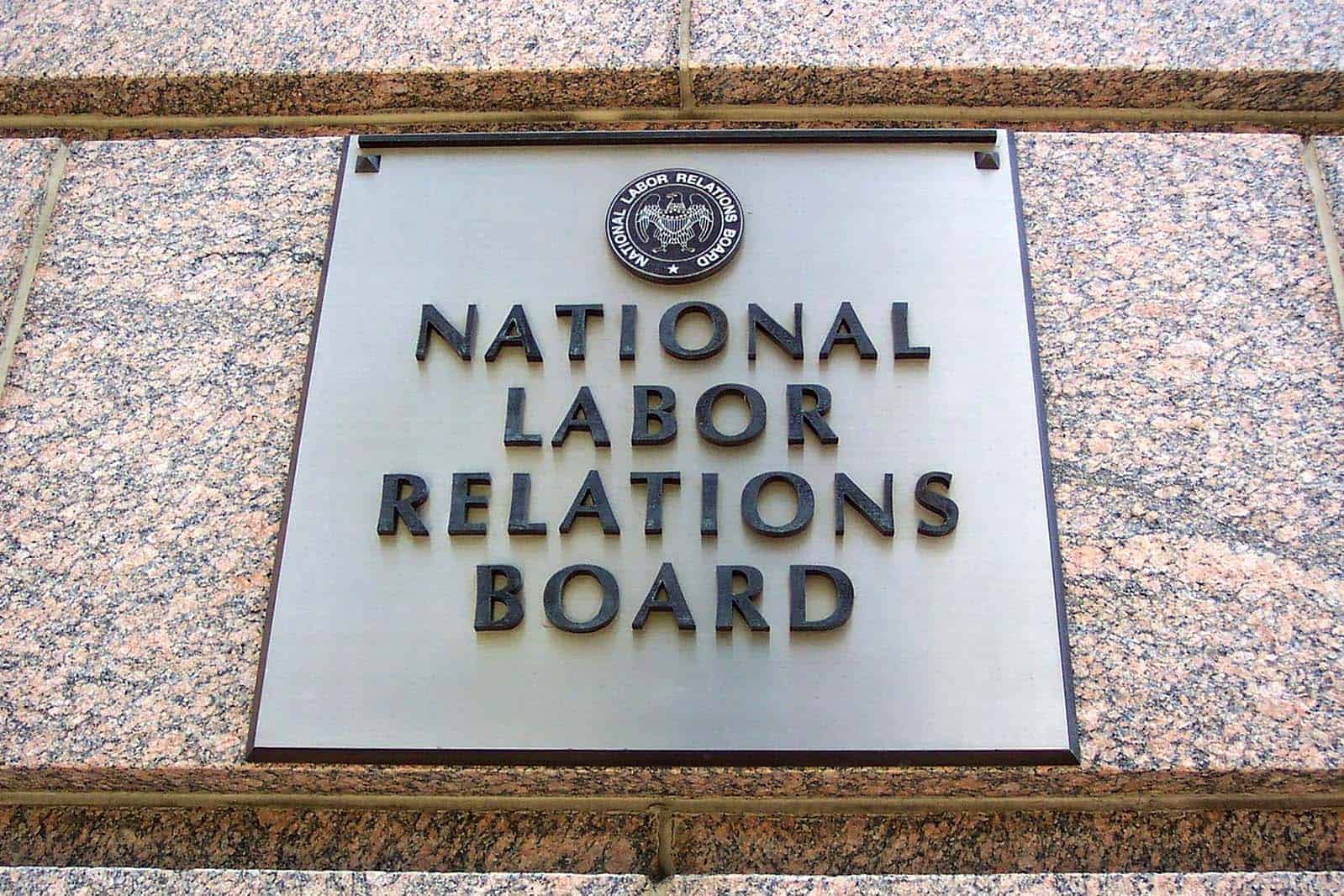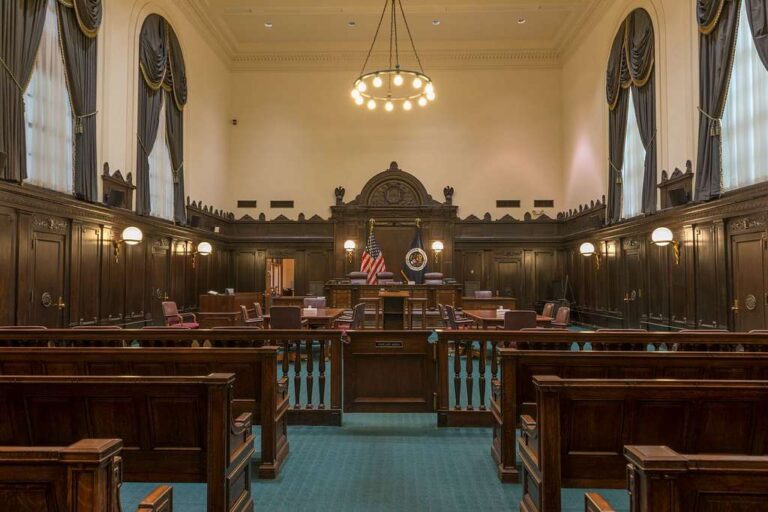
Benjamin Sachs is the Kestnbaum Professor of Labor and Industry at Harvard Law School and a leading expert in the field of labor law and labor relations. He is also faculty director of the Center for Labor and a Just Economy. Professor Sachs teaches courses in labor law, employment law, and law and social change, and his writing focuses on union organizing and unions in American politics. Prior to joining the Harvard faculty in 2008, Professor Sachs was the Joseph Goldstein Fellow at Yale Law School. From 2002-2006, he served as Assistant General Counsel of the Service Employees International Union (SEIU) in Washington, D.C. Professor Sachs graduated from Yale Law School in 1998, and served as a judicial law clerk to the Honorable Stephen Reinhardt of the United States Court of Appeals for the Ninth Circuit. His writing has appeared in the Harvard Law Review, the Yale Law Journal, the Columbia Law Review, the New York Times and elsewhere. Professor Sachs received the Yale Law School teaching award in 2007 and in 2013 received the Sacks-Freund Award for Teaching Excellence at Harvard Law School. He can be reached at [email protected].
The 2020 election of President Biden coupled with Democratic control of Congress brought with it a new wave of hope for federal labor law reform. But as the prospects of such reform have dimmed, we are left where we have been for decades now: with a severely dysfunctional federal labor law that fails to fulfill its central statutory mission of enabling workers to form unions.
Given this federal dysfunction, an obvious alternative for reform is innovation by states. The problem with this approach is that the same federal labor law that fails to protect workers’ right to unionize also chokes off most attempts at local innovation. Indeed, the Supreme Court has imposed on U.S. labor relations one of the broadest preemption regimes in all of American law, making it exceedingly difficult for states to legislate in the areas of union organizing and labor-management relations. The result is a national system of labor law that is not only broken but “ossified.”
In the face of the twin obstacles of federal gridlock and federal preemption, those interested in revitalizing labor law have attempted several different approaches. One is to use an exception to the generally stifling federal preemption rules, the exception for “proprietary” actions taken by state and local governments. In brief, when a state or local government acts as a market participant — for example, in its contracting and procurement capacities — rather than as a regulator, the preemption rules do not limit its range of options on the union front. Under the proprietary exception, states have successfully insisted that certain public construction projects be completed with union labor, and that government contractors or recipients of public financing agree to procedures that make it easier for workers to form and join unions. A second approach involves unions leveraging their political influence at the state and local level to secure private agreements with employers that bind the employer to organizing and bargaining rules more favorable to unionization than those available under federal law. In this form of “tripartite labor lawmaking,” local governments, for example, have made zoning approvals contingent upon an employer’s willingness to agree (with a union) to abide by card check recognition. And, of course, advocates have pressed for changes to the federal law that would lift by statutory amendment the strict preemption rules that the Supreme Court has built through judicial opinion.
Operating through the proprietary exception and tripartite lawmaking, reformers have made important gains, but those gains have been inherently limited. Courts have, for example, construed the proprietary exception rather narrowly, generally imposing a project-specific limit on its reach. And, in any case, the proprietary exception reaches only cases in which the government is in fact acting in a proprietary capacity — leaving the vast swath of private-sector labor relations off limits to state and local interventions. Tripartite lawmaking has enabled important advances too, but the elements necessary for such lawmaking have proven uncommon enough that the approach remains interstitial. Needless to say, statutory reform of labor preemption rules has not succeeded.
But there is another, as yet untapped, mechanism for relaxing preemption rules and enabling states to improve upon the federal system. That mechanism is hiding in plain sight in an obscure section of the federal statute. § 14(c), enacted by Congress as part of the 1959 amendments to the NLRA, gives the National Labor Relations Board the authority to cede jurisdiction to states in a wide range of cases. In particular, § 14(c)(1) reads:
The Board, in its discretion, may, by rule of decision or by published rules . . . decline to assert jurisdiction over any labor dispute involving any class or category of employers, where, in the opinion of the Board, the effect of such labor dispute on commerce is not sufficiently substantial to warrant the exercise of its jurisdiction . . . .
§ 14(c)(2), in turn, allows states to assume the jurisdiction that the Board cedes under § 14(c)(1).
Labor disputes involving a “class or category of employers” — i.e., an industry — may have an insufficient effect on interstate commerce because the industry in question is itself just too small or too local in nature, and, indeed, this has been the conventional understanding of the types of cases reached by § 14(c). To the extent that § 14(c) amounts to a kind of discretionary small-business exception to NLRB jurisdiction, it constitutes another very modest incursion into general preemption principles. But, and here is the far more important point, § 14(c) promises to be more than a small–business exception. The section also gives the Board discretion to determine that an industry’s labor disputes are unlikely to have a substantial effect on interstate commerce because a state regulates — or intends to regulate — the industry’s labor relations in such a way so as to minimize such disputes. As the Second Circuit put it:
The impact of labor disputes on commerce is, of course, the overall guide, but the dollar volume of business in interstate commerce is not the only yardstick that the Board can or should consider. Many other factors can be important. For instance, if the states regulate a given industry adequately, labor disputes in that industry might well be reduced to the point where their impact on commerce would be insignificant, whatever the volume of interstate commerce in the industry.
Stated even more simply, § 14(c) can be read to give the Board discretion to cede jurisdiction over an industry to a state when the state adequately regulates — or intends to regulate — the labor relations of that industry. This type of cession of jurisdiction is far from a modest exception to labor preemption. To the contrary, § 14(c) gives the Board a mechanism to unpreempt extensive sectors of the contemporary labor market and thereby to give states the latitude to experiment with alternative forms of labor law in those sectors of their economies.
Here’s how it could work. A state could seek the Board’s opinion — through an advisory opinion following hearings or through a rulemaking — as to whether the Board would decline to assert jurisdiction over an industry in that state. In its petition, the state could detail the types of labor regulation it would enact, or has enacted, to prevent labor disputes in the industry. For example, a state could enact a comprehensive system of collective bargaining for employees in a particular industry in the state. Such a system could provide for many pro-union policies, like works councils, members-only unions, and card check recognition at the level of the individual workplace, as well as sectoral representation and sectoral bargaining at the level of the industry. It might also provide union organizers with the right to access employees on employer property and set up a procedure to allow employers to receive compensation for such access rights. Just as the 1935 Congress viewed the granting of union organizing and collective bargaining rights as an important means to reduce labor disputes, the Board could today decide that these state-level policies would have similar results. And if, in the Board’s opinion, the state’s proposal would reduce labor disputes so that their effects would not be “sufficiently substantial to warrant the exercise of jurisdiction,” the Board could decline jurisdiction and thereby unpreempt the state’s policy. The state would then be free to implement or enforce its alternative labor law.
§ 14(c)(1) does contain a proviso that limits the sweep of the Board’s discretion to unpreempt state law. That proviso states that the Board “shall not decline to assert jurisdiction over any labor dispute over which it would assert jurisdiction under the standards prevailing upon August 1, 1959.” There are two ways to interpret this proviso, both of which allow for a significant range of Board action, but only the second of which takes full account of the relevant statutory language.
Prior to 1959, the Board had adopted ten specific jurisdictional standards for ten industries, all based on the dollar amount of business conducted by employers in the industry. Those industries were: non-retail; office buildings; public utilities; newspapers and communications systems; retail (including restaurants); hotels; transportation enterprises, links, and channels of interstate commerce; transit systems; taxicabs; and national defense. For example, under the 1959 enumerated standard for the hotel industry, the Board would assert jurisdiction over a hotel that had $50,000 in gross revenues but not over a hotel that had less revenue. The first way to read the § 14(c) proviso is that the Board cannot, today, decline jurisdiction over an employer that meets one of these ten volume-of-business standards. On this reading, in addition to its discretion to cede jurisdiction over small, local employers, § 14(c)(1) would give the Board the power to unpreempt those industries not covered by one of the ten enumerated volume-of-business standards. Given that this power would include the option of ceding jurisdiction over health care, for example, § 14(c) significantly frees states to act even on this first reading.
There is, however, a potential problem with this narrow reading of the Board’s § 14(c) power — a problem that suggests § 14(c) is amenable to a much broader potential sweep. The problem arises because the ten enumerated volume-of-business standards were not the only way the Board made jurisdictional decisions prior to August 1, 1959. The Board had on at least one occasion utilized a second standard for making jurisdictional decisions prior to the operative date. In 1955, the Board declined to assert jurisdiction over a unit of security guards at a harness racetrack not because the security contractor (or the racetrack) did less than a certain amount of business. Rather, the decision to decline jurisdiction was based on the fact that, inter alia, the labor relations of the industry in question were “the subject of special laws enacted by the State of New York for the regulation of employment at race tracks and for the representation of race track employees by labor organizations.” That is, there were two standards according to which the Board had declined jurisdiction prior to 1959: the volume-of-business standard and the sufficient state regulation standard.
To know for any particular industry whether the Board “would assert jurisdiction under the standards prevailing upon August 1, 1959,” then, we must ask two questions: we must ask whether the volume-of-business in that sector is above the relevant threshold and whether state law regulating the sector will minimize labor disputes to the extent that such disputes will not have a substantial effect on commerce. Only if the answer to the first question is yes and the answer to the second question is no, can we say for certain that the Board would assert jurisdiction under the pre-1959 standards. This means that if the answer to the second question is yes (if the Board finds that state law would sufficiently minimize labor disputes) then we cannot say for certain that the Board would have been compelled to assert jurisdiction under the standards prevailing in 1959. And this means, in turn, that a Board decision today to cede jurisdiction over an industry because of state regulation of that industry’s labor relations could survive the proviso even if the industry satisfies one of the enumerated volume-of-business standards. For example, should California propose to enact a comprehensive labor law for the hospitality industry, the Board could have discretion to cede jurisdiction to California even over hotels that exceed the 1959 volume-of-business standard.
This example leads to a final observation. The use of § 14(c) requires a specific kind of interaction between a sitting NLRB and a state: the state must be willing to regulate the labor relations of an industry within its borders in a manner that that particular NLRB believes will minimize labor disputes. It is also true that § 14(c) gives the Board discretion to decide what type of state labor law is likely to minimize labor disputes. We can expect these determinations to be politically inflected: Democratic Boards may believe that robust protections for unions and collective bargaining are the best way to minimize labor disputes while Republican Boards are likely to decide that more and stronger unions will mean more labor disputes. Accordingly, robust application of § 14(c) may result in Democratic Boards authorizing Democratic states to enact labor laws that facilitate labor power and Republican Boards authorizing Republican states to enact labor laws that constrain labor power. That is a policy trade-off implicit in this reading of § 14(c), as it is in most efforts to loosen federal labor preemption.
In sum, § 14(c) gives the NLRB significant power to partner with states and authorize experimentation in labor law. Given the dysfunctional state of the federal regime, it seems high time for the Board to exercise this power.
This post was first published on January 11, 2022.









Daily News & Commentary
Start your day with our roundup of the latest labor developments. See all
December 22
Worker-friendly legislation enacted in New York; UW Professor wins free speech case; Trucking company ordered to pay $23 million to Teamsters.
December 21
Argentine unions march against labor law reform; WNBA players vote to authorize a strike; and the NLRB prepares to clear its backlog.
December 19
Labor law professors file an amici curiae and the NLRB regains quorum.
December 18
New Jersey adopts disparate impact rules; Teamsters oppose railroad merger; court pauses more shutdown layoffs.
December 17
The TSA suspends a labor union representing 47,000 officers for a second time; the Trump administration seeks to recruit over 1,000 artificial intelligence experts to the federal workforce; and the New York Times reports on the tumultuous changes that U.S. labor relations has seen over the past year.
December 16
Second Circuit affirms dismissal of former collegiate athletes’ antitrust suit; UPS will invest $120 million in truck-unloading robots; Sharon Block argues there are reasons for optimism about labor’s future.